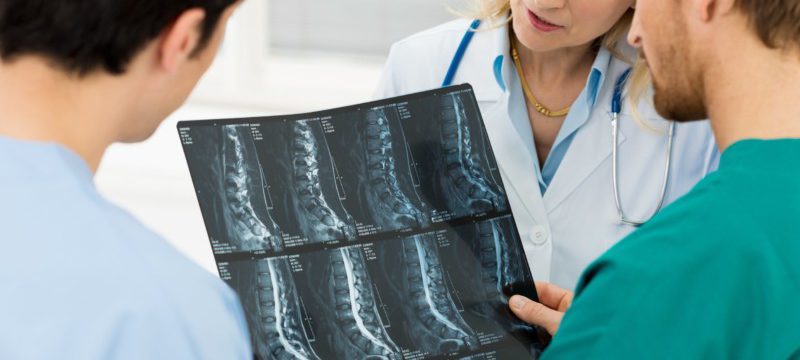The Causes, Symptoms & Treatment of Spinal Osteochondrosis
Category: Spine | Author: Stefano Sinicropi

Osteochondrosis is a spinal condition caused by changes in the disc cartilage. This shift in disc cartilage can cause other issues throughout the spine, including disc instability, spinal degeneration and sclerosis of the spine. Here’s a closer look at the causes and symptoms of spinal osteochondrosis, and a walkthrough of your treatment options.
Causes and Symptoms of Osteochondrosis
Osteochondrosis can occur in any portion of the spine, so it isn’t always easy to diagnose. The condition progressively sets in with normal spinal wear and tear as we age. When we hit our mid-20’s, our spines slowly start to degenerate. Loss of water and lubrication in the cartilage puts excessive stress on the vertebral joints, which slowly leads to spinal instability, which is the first stage of osteochondrosis. Left untreated, it can lead to stiffening of your spine.
Natural aging is the most common cause of osteochondrosis, but other risk factors that increase your likelihood of developing the condition include:
- Long periods in the car (career in transportation)
- Smoking
- Years of physical labor
- A previous spine surgery
Symptoms also tend to vary based on the location of the degeneration, so pain can be isolated to the spinal region or it can radiate out to your limbs. Here’s a look at some of the more common symptoms associated with osteochondrosis:
- Pain in the spine
- Radiating pain in the legs, arms
- Numbness
- Tingling
- Leg weakness
Diagnosing and Treating Osteochondrosis
Diagnosing the condition is a three-step process. First, your doctor will begin by taking your medical history before conducting a physical exam. After delving into your health history and performing a physical exam, your doctor will conduct some neurological tests and imaging tests to see the extent of the cartilage damage. An MRI is typically the most useful imaging test.
Treatment of the condition depends on the severity of disease symptoms. The goal is to stabilize the spine, so physical therapy is often one of the first conservative treatment options. Other non-operative treatment methods include:
- Over-the counter NSAIDs
- Heat therapy
- Injections (trigger point and nerve block injections)
- Relaxation exercises
If conservative treatments fail, surgery to stabilize the spine may be necessary. Depending on the location of the degeneration, your surgery may be performed to increase the width of your spinal canal and foramen (a natural anatomic hole that a nerve exist through), to stabilize the spine with a prosthesis or to fuse the spine. Your doctor will walk you through your options.